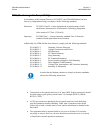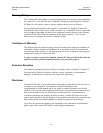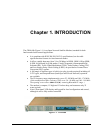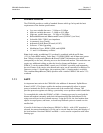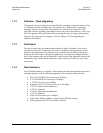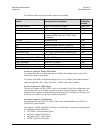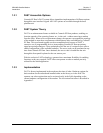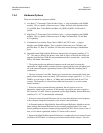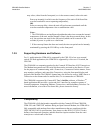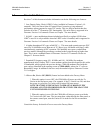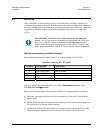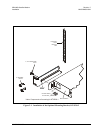
CDM-600 Satellite Modem Revision 7
Introduction MN/CDM600.IOM
1–7
1.3.4 Hardware Options
There are four hardware options available:
1) Low Rate (1
st
Generation) Turbo Product Codec - a plug-in daughter card (SIMM
module). This is capable of data rates up to 5 Mbps, and code rates limited to Rate
5/16 (BPSK, Rate 21/44 (BPSK) and Rate 3/4 (QPSK, OQPSK, 8-PSK and 16-
QAM).
2) High Rate (2
st
Generation) Turbo Product Codec - a plug-in daughter card (SIMM
module). This is capable of data rates up to 20 Mbps, and adds Rate 7/8 and Rate
0.95 capability.
3) Combination Low-density Parity Check (LDPC) and TPC Codec - a plug-in
daughter card (SIMM module). This is capable of data rates up to 20 Mbps, and
provides Rate 1/2, Rate 2/3 and Rate 3/4 code rates across the range of modulation
types.
4) Internal/External High Stability Reference that provides a frequency stability of 2 x
10
-8
. This may be fitted in the factory at the time of order, or fitted in the field as an
upgrade (provided the CDM-600 was manufactured after a certain date - consult the
factory for further information).
* The option provides an additional connector on the rear panel to permit the
connection of a high-stability external reference signal, which in turn will phase-lock
all of the internal frequency generation circuits of the CDM-600, including the IF
synthesizers.
* The new connector is an SMA female type, located at the extreme right of the rear
panel (when looking at the rear panel). This connector accepts signals at 1, 2, 5, 10 or
20MHz, over the range -5 dBm to +15 dBm, and is matched for both 50 and 75 Ω
systems. The frequency is selected from either the front panel, or over the remote
control interface.
* If the user selects external reference operation, the unit expects to see an
appropriate signal at this connector. If the monitor circuit does not sense a signal at
the connector, a Traffic Alarm is generated, and the High-Stability Internal Reference
(stability of 5 x 10
-8
) is automatically substituted.
* If the user selects Internal Reference, the user may then adjust the exact frequency
of the reference using the front panel, or the remote control interface.
* In External mode the High-Stability Internal/External Reference Module works by
phase-locking the Internal Reference to the externally applied signal. If for some
reason (perhaps an incorrect frequency being applied) the PLL circuit senses a loss of
lock, a Unit Alarm is generated, and the TX carrier will be muted.
* Because the High-Stability Internal Reference is comprised of an Ovenized Crystal
Oscillator (OCXO) there is a warm up period associated with this scheme. The user



